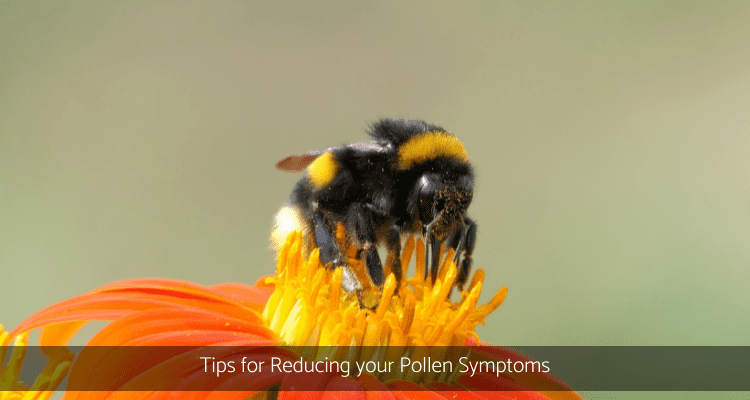Spring is just around the corner… and that means continual sneezing, unable to stop coughing, itchy eyes, stuffy nose, tightness of the chest, headaches, dizziness, fainting, itchy, irritating skin, hives (urticaria), diarrhoea, abdominal pain, nausea for those with pollen allergies. Sound familiar?
Airborne pollens are certainly the most troublesome culprits for seasonal allergic rhinitis, more commonly known as hayfever and pollen allergy symptoms. From grasses, being the majority, weed and tree pollens, the allergic reactions are triggered by direct contact either breathed in, on the face or on exposed skin such as arms, legs and hands when sitting in the grass or touching plants.
Information about Australian pollen counts is available at www.pollenforecast.com.au
In many cases, more than one variety of pollen can be a trigger. Some of the most irritating plants that will bother pollen allergy sufferers are produced by airborne pollen from northern hemisphere grasses, trees and weeds. Improved pasture grasses and pollen from exotic trees planted for their autumn colours, are more allergenic than pollen from Australian native grasses and trees – Pellitory Weed (asthma weed), Patterson’s Curse, Ragweed and Parthenium.
Asthma weed, was accidentally introduced in a shipload of marble from Italy in the early 1900s. It is mainly found in Sydney. Yours truly suffered to the point of severe pain in my hands and fingers when Tony and I lived in North Sydney area early 1982. This weed grew directly outside our windows and I had no clue till several years later how much it actually contributed to my un-wellness.
We created an allergen free garden that attracts birds and insects, Bottlebrush (Callistemon spp), being one of my favourite Aussie natives.
Pollens are either carried by birds and animals on their bodies or wind-borne. Summer and spring generally the worst seasons and early morning and early evening being the worst times during the day. Humid days are generally more problematic.
It is important to investigate whether there is an underlying condition causing the pollen allergy. This may be another medical condition possibly triggering pollen allergies such as asthma, atopy, anaphylactic reaction, atopic dermatitis, peanut allergy, post-nasal drip or rhinitis medicamentosa.
Professionals recommend these simple tips:
- During spring and summer keep your windows closed in the early morning and early evening when the pollen spores are the most active.
- Avoid going out during windy days or after thunderstorms.
- Stay indoors till after 12 MD.
- Shower and change clothing after returning home and after gardening to reduce allergens on yourself and inside your home.
- Wear sunglasses to protect your eyes.
- Do not mow the grass and stay inside when it is being mown.
- If mowing or going out on windy days is unavoidable, wear a mask or consider taking a non-drowsy antihistamine if your doctor has suggested this.
- Consider planting a low allergen garden around your home.
- Keep windows closed when in your car and use recirculating air conditioning.
- Do not picnic in parks or in the country during the pollen season
- Try to plan your holidays out of the pollen season or holiday at the seaside
- If you are sensitive to particular weeds or trees that are outside your bedroom window, have them removed
- Research plants less likely to trigger allergic rhinitis or asthma when landscaping and planting gardens.
- Shower when you arrive home and rinse your eyes frequently with water
- Carry a supply of tissues
- Consider getting consultation from professionals in the field, such as Australasian Society of Clinical Immunology and Allergy (ASCIA) to target the triggers to your allergies.
Enjoy your Spring this year!
References
Australasian Society of Clinical Immunology and Allergy (ASCIA). (2019). Pollen Allergy. [online] Available at: https://www.allergy.org.au/patients/allergic-rhinitis-hay-fever-and-sinusitis/pollen-allergy [Accessed 14 Sep. 2019].
Ragg M, The Low Allergy Garden; Hodder & Stoughton, 1998





